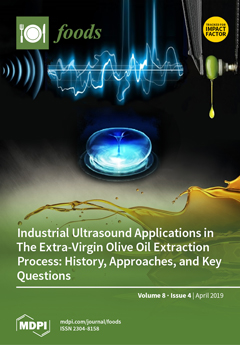Tricholoma matsutake (T. matsutake) growing in Tibet is very popular for its high economic and medicinal value, but fresh
T. matsutake has an extremely short shelf life. The shelf life of
T. matsutake is complex, influenced by product characteristics, surrounding environmental conditions, and
[...] Read more.
Tricholoma matsutake (T. matsutake) growing in Tibet is very popular for its high economic and medicinal value, but fresh
T. matsutake has an extremely short shelf life. The shelf life of
T. matsutake is complex, influenced by product characteristics, surrounding environmental conditions, and spoilage development. The objective of this work was to study the quality characteristics of fresh
T. matsutake during its shelf life period in modified atmosphere packaging (MAP) conditions and establish its remaining shelf life prediction models in a cold chain. In this study, we measured and analyzed quality indicators of fresh
T. matsutake, including hardness (cap, stipe), color, odor of sensory characteristics, pH, soluble solids content (SSC), and moisture content (MC) of physical and chemical characteristics under the temperature condition of 4 °C and relative humidity (RH) of 90%. The sensory evaluation results showed that the odor indicator in sensory characteristics was more sensitive to the freshness of
T. matsutake. The changes of pH, SSC, and MC were divided into three periods to analyze the physiological changes of
T. matsutake. The cap spread process could affect the changes of pH, SSC, and MC in period S
1, and they changed gradually in period S
2. In the period S
3, they changed complicatedly because of deterioration. The remaining shelf life prediction model of
T. matsutake was established by the back propagation (BP) neural network method to quantify the relationship between the quality indicators and the remaining shelf life. The shelf life characteristics are complex, which were optimized by correlation analysis. Significant benefits of this work are anticipated on the transportation and preservation of fresh
T. matsutake to the market and the reduction of its losses in the postharvest chain.
Full article






